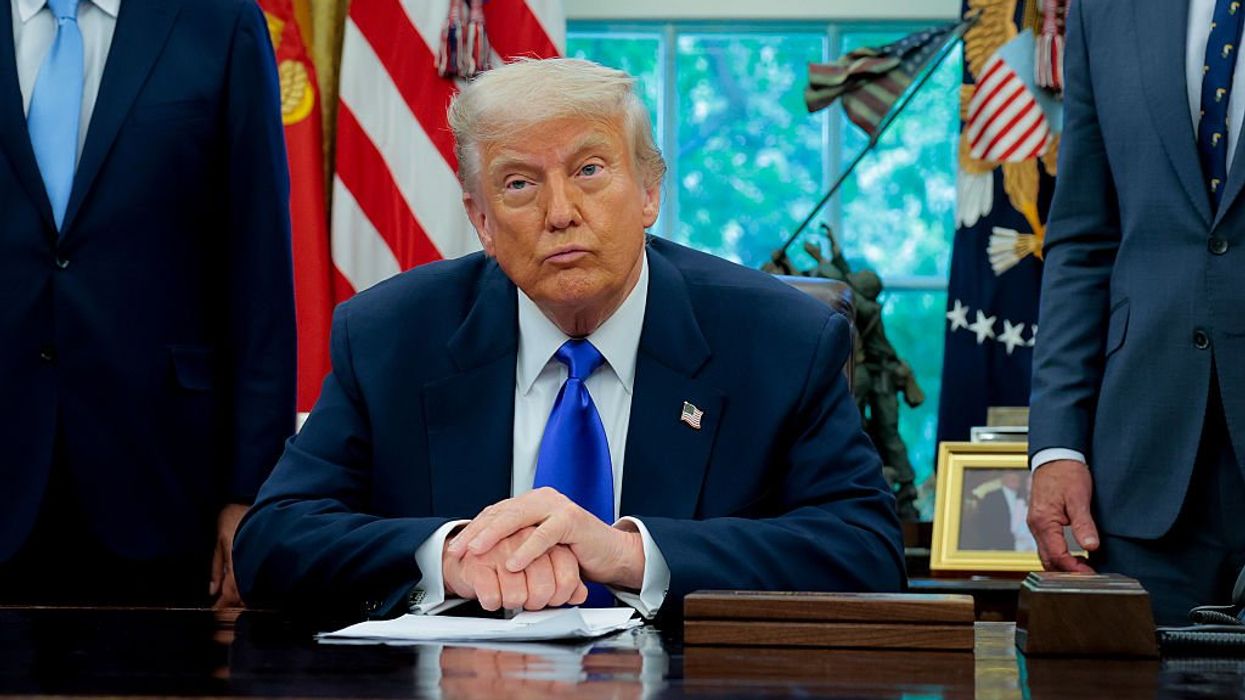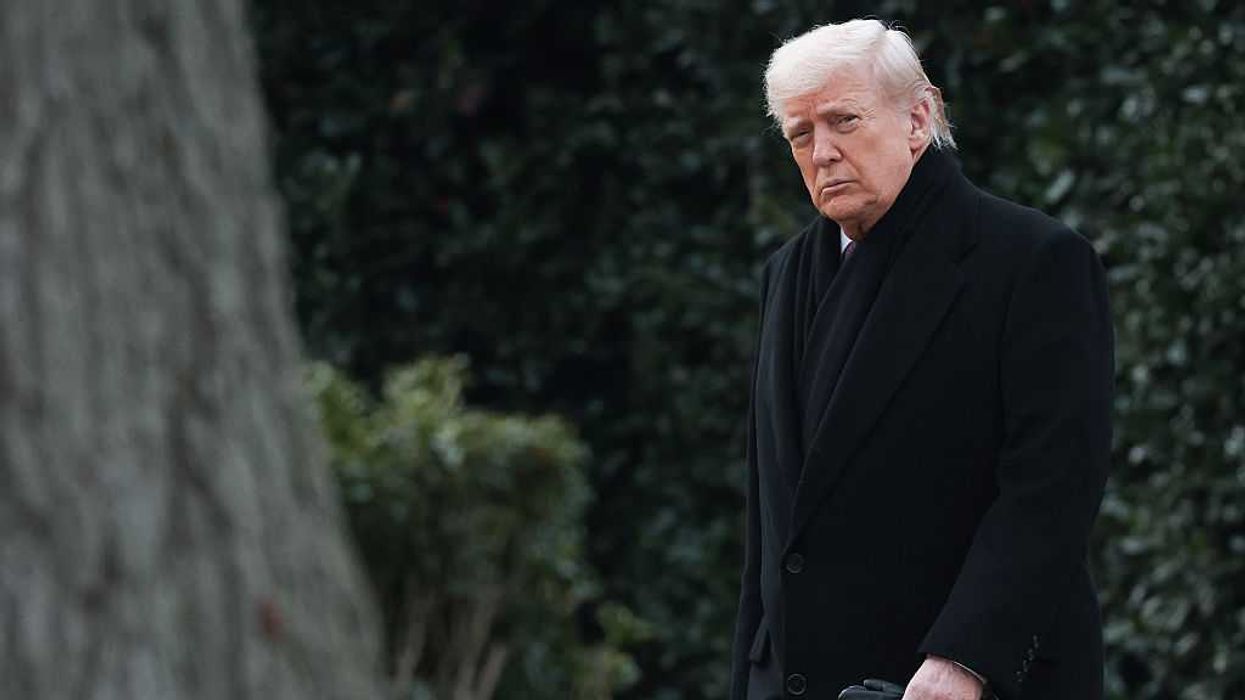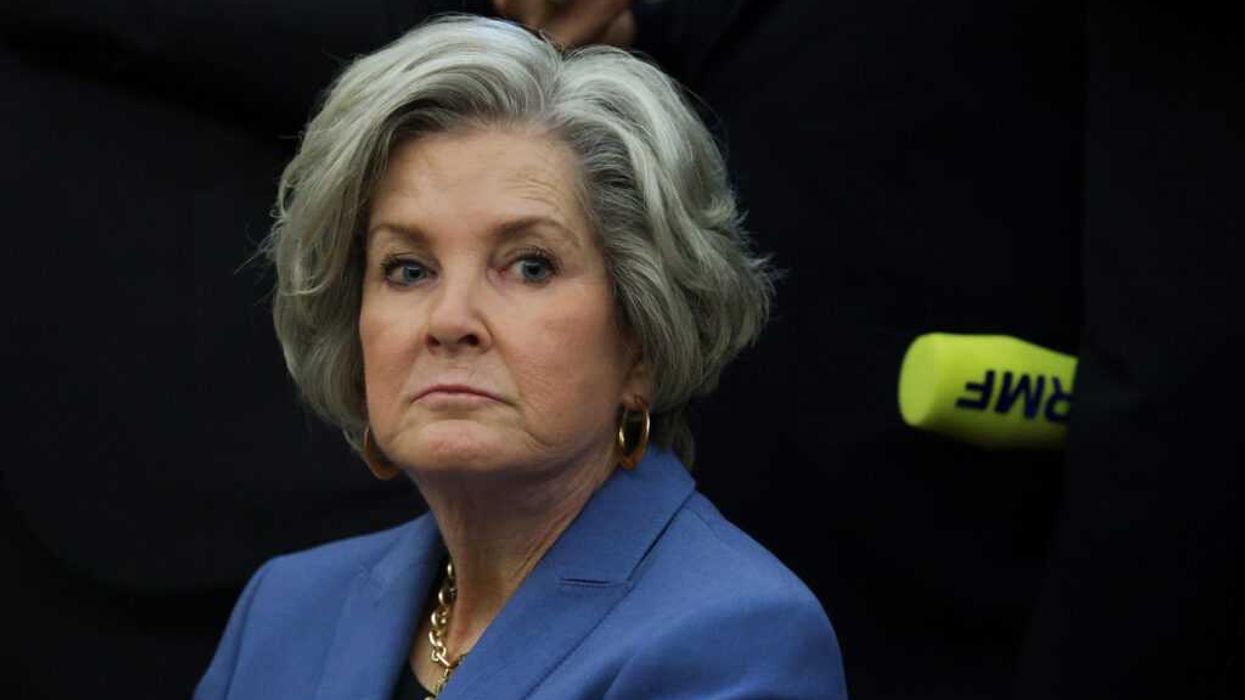President Donald Trump was elected for a second term after a campaign in which voters were persuaded that he could skillfully manage the economy better than his Democratic opponent. On the campaign trail and since being elected for the second time, President Trump has promised that his policies would bolster economic growth, boost domestic manufacturing with more products “made in the USA,” reduce the price of groceries “on Day 1,” and make America “ very rich ” again.
These were bold promises, so how is President Trump doing, three and a half months into his term? The evidence so far is as mixed and uncertain as his roller coaster tariff policy.
Economic growth. After a chaotic month of on again, off again tariffs and a turbulent stock market, many Americans are dismayed that the nation’s gross domestic product—the measure of all goods and services produced by the economy—actually shrank in the first three months of the year. But rather than indicating a struggling economy, it may have been a byproduct of companies front-loading the purchase of imports in anticipation of the tariffs to come. Imports get subtracted from GDP for accounting purposes, so this may end up being a short-term trend. In the meantime, all the imports have led to a surge in the trade deficit, which hit a record $140 billion in March–the exact opposite of the Trump administration’s tariff policy goal.
Reflecting the volatile climate of conflicting signals, Goldman Sachs raised its recession probability forecast to 45%. Yet, later that same day, after President Trump announced a 90-day tariff pause, Goldman Sachs walked back its prediction. Uncertainty is in the air, everywhere you look.
Prices and inflation. Here too, the trend is toward more uncertainty and conflicting signals.. Donald Trump said, “We’re going to get the prices down. Groceries, cars, everything.” But the average retail price of eggs in the grocery store increased from $4.95 in January to $6.22 in March, a 26% increase. Paradoxically, though, wholesale egg prices —the amount grocers pay to suppliers—have dropped since Trump took office. The real question is: will that wholesale egg decline ever translate into relief for consumers? Currently, we simply don’t know.
Meat and poultry prices have risen over 9% compared to a year ago, tripling the rate of inflation (though prices have fluctuated somewhat by locality). Prices for coffee, seafood, fruit and vegetables, and cheese and nuts are predicted to rise due to the uncertainty and volatility of the White House tariff policy, causing businesses to freeze their production and investment plans.
David Dennison, director of operations at the Original Pancake House restaurant chain in suburban Washington, D.C., said costs have already increased by more than 20% on food items such as oranges, peppers, avocados, and tomatoes.
President Trump also promised to bring down the price of gas fuel through his enthusiastic embrace of a “Drill, baby, drill” policy. Yet, so far the price of gas has increased slightly from $3.018 per gallon in December to $3.171 in April, about a 5% increase. But paradoxically again, the price of crude oil has dropped by nearly 25% since early January. However, due to a lag in the price at the gas pump, it’s not clear which way retail prices ultimately will go.
While many prices are up, again somewhat paradoxically, the rate of inflation has dropped to 2.4%, marking a six-month low. But as President Joe Biden and Vice President Kamala Harris found out the hard way, everyday people don’t care much about the rate of inflation, which is the rate of price increases. They care about the price levels themselves — what they are actually paying in the grocery store or at the gas pump.
The White House can be cheered a bit by the fact that the monthly Consumer Price Index (CPI) decreased by 0.1%, marking the first monthly decline since May 2020. But it had increased twice as much the month before. With so much uncertainty and volatility, it’s hard to know which way the CPI will continue trending. Once the full impact of tariffs hits—either actual or the effects of policy uncertainty—most experts predict that prices will climb. President Trump pretty much admitted as much with his comment that children might have to spend a “couple bucks more” on dolls.
Unemployment. One positive sign for the Trump economy is that the unemployment rate so far has held steady at a very low 4.2%, despite White House attempts to fire many workers at various federal agencies. Changes in unemployment rates tend to lag behind the broader economy, except during a catastrophe like a pandemic or war, so it’s possible that Trump’s executive orders and other actions might show impact in the coming weeks.
Wages. Additionally, the Trump economy is benefiting from an increase in real average hourly wages from March 2024 to March 2025 by 1.4% (and by 0.3% from February to March alone). But that is still way lower than the rate of inflation, so workers might not be noticing the increase. And Trump can’t really claim much credit since most of that increase came when Joe Biden was president. The average work week actually declined during the past year by 0.6 percent, so the wages in people’s pockets don’t reflect much of an increase.
In all these areas, there has been more uncertainty than clarity, and the verdict about future trends is still out.
The stock market has fallen…
One thing is for sure: the stock market’s gyrating roller coaster has been giving millions of investors financial vertigo. The S&P 500, a broad stock market gauge, dropped 18.9% between its Feb. 19 peak and its April 8 low, before partly bouncing back in the succeeding weeks. The S&P 500 is still five percent lower since Trump’s inauguration in January. So far, this has been Wall Street’s worst start to a new presidential term in 51 years.
…and so has the dollar.
The U.S. dollar has also lost about nine percent of its value since Trump took office. Investors in U.S. Treasuries and America’s debt have hesitated amidst the ongoing uncertainty, with bond prices fluctuating along with the value of the dollar. Currency investors instead have loaded up on more of other currencies and commodities, such as the euro, yen, Swiss franc, and gold. In short, investors are registering their pessimism about the Trump administration’s policies by dumping the dollar, so this is a trend worth watching to see how it develops.
If this decline in dollar dominance continues, it could force the U.S. government to pay much higher interest rates to service the national debt. That could well increase the chances that the federal government, at some point, would be forced to enact either tax hikes or cuts to entitlements like Social Security, Medicare, and Medicaid (which the Republican Congress is already trying to figure out how to cut).
The Federal Reserve recently voted unanimously to keep interest rates unchanged as officials brace for the impacts of the tariffs, and to “wait and see” if they will stoke higher inflation and slower growth. Fed Chair Jerome Powell said that it’s “not at all clear” what the central bank should do next, since the uncertainty about tariffs has become pervasive among businesses, which has in turn resulted in stalled investments and hesitation in economic planning. Some companies have put expansion plans on hold due to the unpredictability of trade policy.
The tumult of tariffs.
The sudden imposition of on again, off again high tariffs has introduced an unsettling level of uncertainty and turbulence into the U.S. and global economies. The tariffs have disrupted global supply chains, making it harder for businesses to forecast profitability. While some countries have responded with reciprocal tariffs, others have opted for negotiations, adding another layer of unpredictability. The White House’s yo-yo tariff war has left longtime trade allies, as well as competitors, bewildered and unsure of America’s trustworthiness as a trade partner. With tariffs on China reaching up to 145%, many firms have had to pause orders from China, increasing the odds that they will soon run out of inventory for certain goods and materials.
Just last weekend, new tariffs of 25 percent on imported auto parts took effect. That’s in addition to a previous tax of 25 percent on imported cars. In early May, business leaders said they are struggling to forecast their business and investment outlook because of the lack of clarity on trade policy. More companies have warned that they will have to pass on higher costs to consumers as they pay more to import finished goods and spare parts into the U.S. Despite the recent stock recovery, “The damage to economic momentum has already been done,” said Mike Sanders from Madison Investments.
Different economists have contrasting views on these weighty matters, and the White House insists that a degree of short-term pain is necessary to bring long-term gain. But The Economist magazine predicts that “America will be a country with shabbier roads, older airports and more dated factories.” The Trump administration’s tariff strategy is a huge gamble, and the verdict is still out on its ultimate impacts.
Consumers react, Trump’s favorability declines.
Amidst this uncertainty, Americans are increasingly worried about the direction of the Trump economy. For the first time since 2001, a Gallup poll found that more than half of Americans say their financial situation is getting worse, and President Trump’s approval ratings are declining. In a CNN/SSRS poll, 66% of Americans said they are pessimistic (29%) or afraid (37%) about the economy, with just 34% feeling enthusiastic or optimistic. Donald Trump’s 100-day approval rating is the worst for a U.S. president in 80 years. Even small businesses that had high hopes for Trump’s second term show declining confidence.
Perhaps to counter the darkening public mood, the White House has begun taking steps to try and hide the new economic reality from the American public. Recently, President Trump tried to claim that the price of gasoline is the “lowest in years,” which several media outlets, including Fox News, debunked as far from accurate. And an Amazon.com subsidiary announced that, in the interest of transparency, it would begin publicly posting how much tariffs will personally cost each of its customers on every product. But the Trump administration decried that as a “hostile and political act,” and President Trump reportedly called billionaire Jeff Bezos, Amazon’s founder, and demanded that Amazon cease these efforts. Amazon complied.
Meanwhile, Trump has started to make excuses for the economy’s volatile performance. On the one hand, he takes full credit for private-sector growth that started right after his November election. But then he frequently blames the previous president, Joe Biden, for the current slowdown and high prices. In a recent interview with NBC, the president deceptively boasted, “The good parts are the ‘Trump economy’ and the bad parts are the ‘Biden economy’.”
But it’s not quite that simple. David Sanger, New York Times national security correspondent, said President Trump is facing a fundamental timing problem over his tariff strategy. “It will take years,” said Sanger, “for the huge investments he predicts will flow into the United States to unfold and bring about the industrial renaissance he has promised.” For example, the timeline for constructing a new semiconductor fabrication plant in the U.S. can take five years. But the economic pain of the tariffs has already started and will increase in the months ahead. “What is at stake,” wrote Sanger, “is a question of fundamental competence on an issue that [Trump] has always used to define himself.”
With 44 months still left in Donald Trump’s second term, it’s too soon to predict the ultimate fate of the Trump economy, or whether President Trump will succeed in revitalizing US manufacturing. As Yogi Berra once famously said, “It’s tough to make predictions, especially about the future.” But the White House still has many months to try and right the leaky ship, and the clock is ticking.
Steven Hill was policy director for the Center for Humane Technology, co-founder of FairVote, and political reform director at New America. You can reach him on X @StevenHill1776.



















